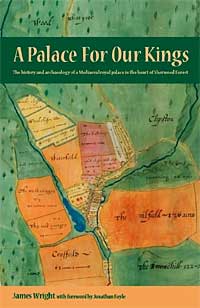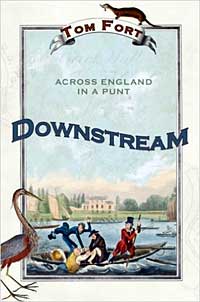Book reviews, Autumn 2016
Mary Ward College Of Education, Keyworth
By Howard Fisher
Keyworth and District Local History Society 2016 £7.00 ISBN 978-0-9524602-5-1
(Copies obtainable from the Library, Church Drive, Keyworth, NG12 5FF)
One of the issues highlighted by the 1944 Education Act was how to attract and adequately train a whole new generation of teachers. The way this was resolved was for students who saw themselves going into secondary teaching, particularly into grammar schools, to study for a first degree in an academic subject and then undertake a one year PGCE. For students intending to teach at junior level would-be teachers were steered in the direction of teacher training colleges, which would be overseen by universities. Howard Fisher has written a fine history of the short lived Mary Ward College of Education, a Roman Catholic establishment set up as one of seven teacher training colleges adjudicated by the University of Nottingham.
Mary Ward College was founded and operated by the Loreto Sisters, on a site on Nicker Hill, Keyworth. Building work began in 1968, and the new college was opened by the young Princess Anne in June 1970. It was destined for a short life: in 1975 it was announced that the college would close, and this happened in 1977 when the last students completed their course.
Howard's book is based on various documentary sources he has carefully unearthed, and on interviews with many people connected to the college, including past students and staff. He begins the book with a brief essay on the Roman Catholic background to the college, and in particular to Mary Ward. Subsequently the book is a detailed assessment of the building of the college, the staff, the students - it was interesting to find that rules were still being enforced on the eviction of males from the rooms of females in the mid-1970s long after the University of Nottingham had abandoned such sex policing - the curriculum and other matters.
Following the closure of the college, the buildings were acquired by the British Geological Survey. Mary Ward had been operational as a teacher training institution only from 1968 until its final students passed out in 1977.
The book is excellently illustrated with many items from the Keyworth Local History Society's own archives. My only gripe is that Howard refers several times to the Beckett School in West Bridgford, which should of course be the Becket School. But then again I shall probably be the only reader to notice this minor error!
The Mary Ward College did not last very long. Thinking changed, and all the teacher training colleges were closed, some becoming universities (Bishop Grosseteste, Lincoln; Clifton Hall, part of Nottingham Trent University), or being reused, as in the case of Mary Ward, which became the Institute of Geological Sciences, now the British Geological Survey. A short but interesting story, and one which will, I suspect, appeal particularly to past staff and students.
John Beckett
A palace for our kings

The history and archaeology of a Mediaeval royal palace in the heart of Sherwood Forest
By James Wright, with foreword by Jonathan Foyle
Triskele Publishing 2016 ISBN 978-0-9954715-0-4
£20. EBook £6.96.
James Wright's newly published A Palace for our Kings marks the culmination of over a decade of research conducted by Wright and others on King John's Palace, a palatial mediaeval hunting lodge at Clipstone in Sherwood Forest. Wright weaves together documentary evidence, landscape analysis, and the results of various archaeological excavations to present a chronological narrative of the palace's development from the twelfth century to the present. The book is Wright's second major publication after 2008'sCastles of Nottinghamshire.
Wright explores how King John's Palace was part of a very select group of medieval hunting palaces set within royal forests, which also included the palaces of Clarendon and Woodstock. These were clear precursors to the Tudor hunting palaces, like Nonsuch, Oatlands and Woking. The book demonstrates how the palace remained in use as an important royal centre over a long duration, from its construction in the twelfth century through to the late fifteenth century.
Wright gives this underappreciated site the attention it deserves and his strong enthusiasm is evident in the book. Despite the nature of the documentary sources being from a royal perspective, there is a sense that what motivates Wright is not just the story of the monarch's relationship with the palace, but the story of the "ordinary" mediaeval community of Clipstone, exploring its development and reaction to the palace and royal power. He dedicates the book to Robert de Clipstone, who in 1328 led a challenge against royal plans to extend the palace's enclosures and to establish the peel at the cost of the community's common rights, with de Clipstone presenting his case to Edward III personally so well that he was later named the keeper of the manor.
Wright is to be congratulated for synthesising such a large body of evidence so well, and there can be no doubt that this book is the most important published text to date on King John's Palace. It is a must-read for anyone interested in Sherwood Forest or Clipstone and its surrounding area; or more generally, royal hunting and the infrastructure underlying Forest Law.
Craig Dicken
Downstream - Across England in a punt

By Tom Fort Arrow Books 2009 PB ISBN 978-0-09950-5662
Although this is not a newly published book (I bought my copy in the OXFAM bookshop in Welwyn Garden City) I felt that it would appeal to Thorotonians because of the many references to Nottinghamshire and its history. The book is probably still in print, but there is a copy in Bromley House Library and probably in the various public libraries.
Tom Fort is a writer and journalist who has published several somewhat quirky books, including 'Under the Weather' - a rather wry look at our national obsession and The A303: Highway to the Sun'. In 'Downstream' he follows the course of the river Trent from its source on Biddulph Moor in Staffordshire to its meeting with the Humber. The actual 'source' is somewhat disputed as several trickles of water across the moorland bogs could be the 'real' one, but no matter. The river eventually becomes a real flow, capable of supporting a 15ft plywood punt, which Tom used to convey himself and his modest camping kit down the river. On the way he describes the history of the places through which the Trent passes. The stretch through Nottinghamshire is probably the most interesting, with our own Dr Robert Thoroton receiving an honourable mention, along with the Nottingham poet Henry Kirke White. The Bromley Arms at Fiskerton is mentioned, but not the Bromley House Library. The burning of Nottingham Castle in 1831, and the role of Newstead Abbey and the Byron family in Nottinghamshire's history, are extensively covered, along with the involvement of Newark in the Civil War. Eventually, around Gainsborough, the river becomes too dangerous for such a fragile craft as a punt, and Tom then makes use of various other forms of transport in order to reach, and see, the confluence of the Trent and the Humber.
Although this is by no means the only book written which describes a journey along the Trent from source to outflow, the interest in this book is the author's erudition and love of literature. The pages are sprinkled with quotations from poets and other writers. All in all, a delightful read, and fully justifying the £2.50 that the book cost me!
John Wilson